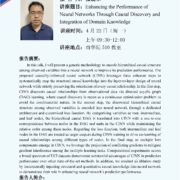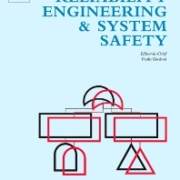Dr. Xiaoge Zhang delivered a talk on “Enhancing the Performance of Neural Networks Through Causal Discovery and Integration of Domain Knowledge” at Sichuan University, China
In this talk, I will present a generic methodology to encode hierarchical causal structure among observed variables into a neural network to improve its prediction performance. The proposed causality-informed neural network (CINN) leverages three coherent steps to systematically map the structural causal knowledge into the layer-to-layer design of neural network while strictly preserving the orientation of every causal relationship. In the first step, CINN discovers causal relationships from observational data via directed acyclic graph (DAG) learning, where causal discovery is recast as a continuous optimization problem to avoid the combinatorial nature. In the second step, the discovered hierarchical causal structure among observed variables is encoded into neural network through a dedicated architecture and customized loss function. By categorizing variables as root, intermediate, and leaf nodes, the hierarchical causal DAG is translated into CINN with a one-to-one correspondence between nodes in the DAG and units in the CINN while maintaining the relative order among these nodes. Regarding the loss function, both intermediate and leaf nodes in the DAG are treated as target outputs during CINN training to drive co-learning of causal relationships among different types of nodes. In the final step, as multiple loss components emerge in CINN, we leverage the projection of conflicting gradients to mitigate gradient interference among the multiple learning tasks. Computational experiments across a broad spectrum of UCI datasets demonstrate substantial advantages of CINN in prediction performance over other state-of-the-art methods. In addition, we conduct an ablation study by incrementally injecting structural and quantitative causal knowledge into neural network to demonstrate their role in enhancing neural network’s prediction performance.
Research paper accepted by Reliability Engineering and Systems Safety
Risk management often involves retrofit optimization to enhance the performance of buildings against extreme events but may result in huge upfront mitigation costs. Existing stochastic optimization frameworks could be computationally expensive, may require explicit programming, and are often not intelligent. Hence, an intelligent risk optimization framework is proposed herein for building structures by developing a deep reinforcement learning-enabled actor-critic neural network model. The proposed framework is divided into two parts including (1) a performance-based environment to assess mitigation costs and uncertain future consequences under hazards and (2) a deep reinforcement learning-enabled risk optimization model for performance enhancement. The performance-based environment takes mitigation alternatives as input and provides consequences and retrofit costs as output by utilizing several steps, including hazard assessment, damage assessment, and consequence assessment. The risk optimization is performed by integrating performance-based environment with actor-critic deep neural networks to simultaneously reduce retrofit costs and uncertain future consequences given seismic hazards. For illustration, the proposed framework is implemented on a portfolio with numerous building structures to demonstrate the new paradigm for intelligent risk optimization. Also, the performance of the proposed method is compared with genetic optimization, deep Q-networks, and proximal policy optimization.
Prof. Yan-Fu Li gave a talk on “Recent Research Progresses on Optimal System Reliability Design”
Optimal system reliability design is an important research field in reliability engineering. Since the 1950s, extensive studies have been conducted on various aspects of this issue. This field remains highly active today due to the need to develop new generations of complex engineering systems, such as 5G telecom networks and high-performance computing clusters, which are expected to be highly reliable to meet the stringent, dynamic, and often real-time quality demands of system operators and end-users. Over the past five years, numerous new researches on optimal system reliability design have been published, addressing the theoretical challenges posed by the new engineering systems. This presentation will systematically review these works with the focus on theoretical advancements, including the models and methods for redundancy allocation problem, redundancy allocation under mixed uncertainty, joint reliability-redundancy allocation problem and joint redundancy allocation and maintenance optimization. Through analysis and discussions, we will outline future research directions.




